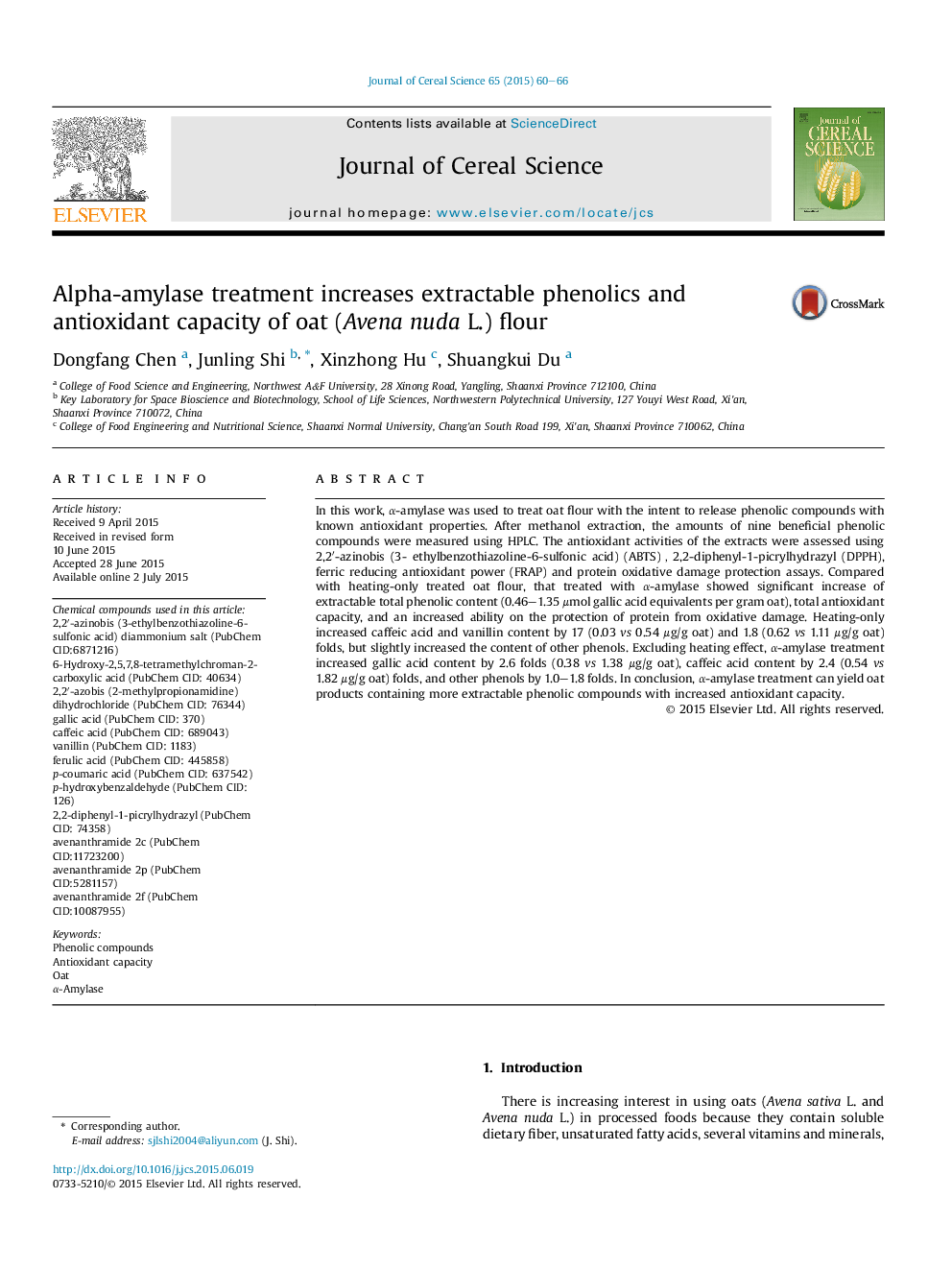| کد مقاله | کد نشریه | سال انتشار | مقاله انگلیسی | نسخه تمام متن |
|---|---|---|---|---|
| 6377773 | 1624897 | 2015 | 7 صفحه PDF | دانلود رایگان |
عنوان انگلیسی مقاله ISI
Alpha-amylase treatment increases extractable phenolics and antioxidant capacity of oat (Avena nuda L.) flour
دانلود مقاله + سفارش ترجمه
دانلود مقاله ISI انگلیسی
رایگان برای ایرانیان
کلمات کلیدی
p-Hydroxybenzaldehyde (PubChem CID: 126)2,2-Diphenyl-1-picrylhydrazyl (PubChem CID: 74358)Vanillin (PubChem CID: 1183)p-Coumaric acid (PubChem CID: 637542) - p-Coumaric اسید (PubChem CID: 637542)α-Amylase - α-آمیلازFerulic acid (PubChem CID: 445858) - اسید فرولیک (PubChem CID: 445858)Caffeic acid (PubChem CID: 689043) - اسید کافئیک (PubChem CID: 689043)Gallic acid (PubChem CID: 370) - اسید گالیک (PubChem CID: 370)Phenolic compounds - ترکیبات فنولیOat - جو دو سرAntioxidant capacity - ظرفیت آنتی اکسیدان
موضوعات مرتبط
علوم زیستی و بیوفناوری
علوم کشاورزی و بیولوژیک
علوم زراعت و اصلاح نباتات
پیش نمایش صفحه اول مقاله

چکیده انگلیسی
In this work, α-amylase was used to treat oat flour with the intent to release phenolic compounds with known antioxidant properties. After methanol extraction, the amounts of nine beneficial phenolic compounds were measured using HPLC. The antioxidant activities of the extracts were assessed using 2,2â²-azinobis (3- ethylbenzothiazoline-6-sulfonic acid) (ABTS)ï¼2,2-diphenyl-1-picrylhydrazyl (DPPH), ferric reducing antioxidant power (FRAP) and protein oxidative damage protection assays. Compared with heating-only treated oat flour, that treated with α-amylase showed significant increase of extractable total phenolic content (0.46-1.35 μmol gallic acid equivalents per gram oat), total antioxidant capacity, and an increased ability on the protection of protein from oxidative damage. Heating-only increased caffeic acid and vanillin content by 17 (0.03 vs 0.54 μg/g oat) and 1.8 (0.62 vs 1.11 μg/g oat) folds, but slightly increased the content of other phenols. Excluding heating effect, α-amylase treatment increased gallic acid content by 2.6 folds (0.38 vs 1.38 μg/g oat), caffeic acid content by 2.4 (0.54 vs 1.82 μg/g oat) folds, and other phenols by 1.0-1.8 folds. In conclusion, α-amylase treatment can yield oat products containing more extractable phenolic compounds with increased antioxidant capacity.
ناشر
Database: Elsevier - ScienceDirect (ساینس دایرکت)
Journal: Journal of Cereal Science - Volume 65, September 2015, Pages 60-66
Journal: Journal of Cereal Science - Volume 65, September 2015, Pages 60-66
نویسندگان
Dongfang Chen, Junling Shi, Xinzhong Hu, Shuangkui Du,